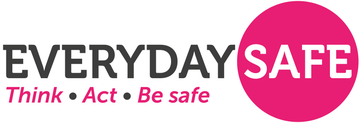Previous reviews found areas for improvement but they were always assigned to health and safety officers. This time is very different. There is a clear focus on leadership from senior managers and especially from academics in departments. There will also be a key role for divisions in ensuring that change happens, by providing clear direction and acting on health and safety assurance reports from their departments. We are also looking to improve access to competent professional advice, and making our guidance easier to understand, and our training more impactful.
We still have some work to do to help people understand what we mean by improving our health and safety culture and we expect to have to work hard to engage them. Engagement will be a key performance indicator for the success of the initiative. We will be actively tracking it and using feedback to improve the quality and accessibility of future events.
We haven't set precise targets because cultural change is a process of continuous improvement. That doesn't mean that rapid progress won't be made, but rather that the destination will always be ahead of us as contexts for health and safety are always changing. The hope is that we can be more confident in our processes and culture within two years.
We are also looking at developing a standard assurance report from divisions to the Safety Executive Group and from there onto Council. This will tell us whether necessary actions are being taken and how we are progressing towards an improved safety culture. We'll also be exploring the use of periodic pulse surveys and carefully evaluating our communications and engagement activities. The possibility of conducting a further review is not on our agenda at the moment but we'll keep it under consideration.
The most useful thing that everyone can do now is to help bring health and safety onto the agenda where they work by starting and continuing the conversation - in team meetings, with colleagues, in 1-1s with supervisors and managers. Talk about your concerns, needs and ideas - and ask for answers from your safety advisers. At the same time, make sure you are aware of what information is available to you locally and who to ask for help and advice. Be more aware of safety risks in your environment, identify the actions that you can take, and report anything you see or experience. You can also help us to help you by sending your comments, ideas, concerns and queries to the EveryDaySafe team at everydaysafe@admin.ox.ac.uk.
The Safety Executive Group includes leaders, at pro-vice-chancellor and director level, of many different aspects of the University - including HR, finance, education and research - so is ideally placed to understand where H&S sits amongst other University priorities.
Yes and in fact we are already integrated under the People theme that the Safety Executive Group is responsible for. For example, work-related stress is an area of shared interest that we will be working on with the Wellbeing project team.
We have been having some early conversations about our interface with OUH. Determining how we work with partners, such as OUH, who are employers in their own right, will be one of the aspects of health and safety policy being considered by the Safety Executive Group.
Yes they were, and will be integral to EveryDaySafe through the new Safety Network. The insurance team will be a core member of the Network, and all other relevant departments, committees and groups, including legal, will be Network members.



